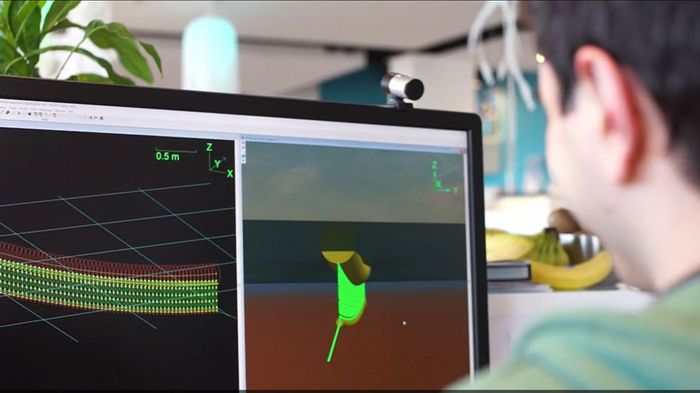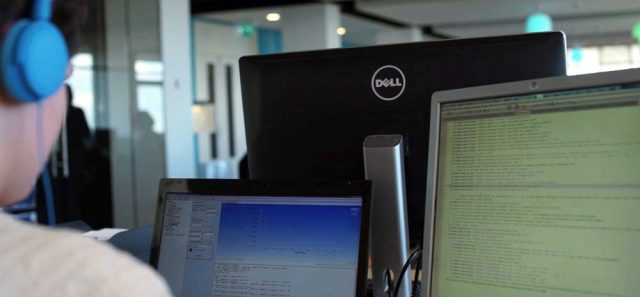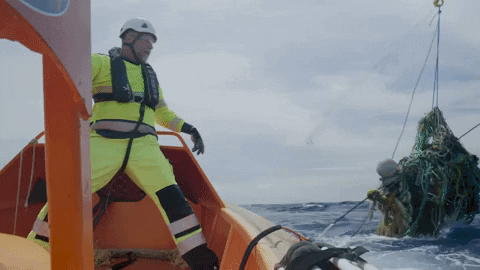
Engineering An Ocean Cleanup Barrier From Scratch
Back to updatesHow we design a system that does not ‘fight the ocean’, but rather ‘moves with it’?
How do you engineer a completely new and innovative system, such as the Ocean Cleanup barrier that will retrieve about half of all floating plastics from the Great Pacific Garbage Patch over a 10-year time span? Conventionally, if you design something, for instance, a bridge or a ship, you build on what has been done before. Bridges and ships have been designed for centuries and much is known about them. Today, there is a wealth of tailor-made design software that produces extremely realistic results long before anything is actually built. This type of computer modeling is used to design a reliable and structurally sound bridge or ship which will endure even in the harshest environments for a long time.
However, The Ocean Cleanup’s design challenge is new: no-one has ever developed floating technology that passively rids the oceans of floating plastic. There is no software available to help us simulate and design concepts. No multi-year data on the associated physics. No guidelines, rules or classification documents to show us the way. In a sense, we have to start from scratch. Adding to the challenge is the location where the system will be installed, in the middle of the ocean, an environment prone to storms whose timing and severity are unpredictable.
Fortunately, there are some similarities between our passive ocean cleaning concept and methods used in other fields. One technology we can certainly draw from is that of floating oil production platforms (FPSOs). FPSOs are designed to be moored for up to 25 years in waters all over the world, including regions where hurricanes frequently occur. The first FPSO was designed in the 1960s and installed in the early 1970s. Since then, engineers have done a lot of research and written design guidelines to minimize the risk of a failure — which can lead to oil spills or even human casualties. Smart design choices are used to mitigate the risk of unacceptable consequences, for instance when mooring lines break. Thanks to this wealth of prior experience, we know these FPSOs have a fail-safe design that can last in the ocean for decades. We have chosen to use the design philosophy for this type of floating system and apply it to our own.
A cross section of the barrier moving along with the waves
This design philosophy works with four limit states (i.e. conditions for which it is designed): serviceability, ultimate, accidental and fatigue. The first is the most obvious: ‘serviceability’, taking into account the need to capture and retrieve plastic from the ocean. This is the limit state in which the operational part of the system is optimized, such that in extremely demanding environmental conditions (strong winds, high waves, and strong currents), the barrier is still effective in capturing and retrieving plastic.
In the ‘ultimate design’ condition, we are preparing for the kind of extreme storms that our barrier is bound to experience during a 10-year ocean deployment. If the mooring lines were to break during such a storm, the floating barrier would drift away, which would be unacceptable. Therefore we are following the common off-shore guidelines for a storm where current, wind and waves all reach extreme magnitude at the same time. Such a storm can be expected to occur only once every 100 years. This standard is commonly used for the mooring of FPSOs, even though such systems are typically deployed for a much shorter length of time. We are determining the specific 100-year storm environment (wave height, wind speed, etc.) for the projected site of our barrier because storm conditions can strongly vary from one location to another. Of course, these extreme conditions cannot be tested full scale prior to production of the system, so they are simulated and tested on a computer model. The loads occurring during this storm are used to determine how strong the system’s components (the mooring lines, anchors, barrier, etc.) must be. To be completely safe, a so-called safety factor is added to the values from the model to account for any inaccuracies that may occur in calculating the components’ strengths.
For the ‘accidental limit’ state we are looking at the barrier while considering the unlikely event that a main component fails, for instance, the breaking of one of the mooring lines that fix the floating barrier to the seabed during this extreme 100-year storm. Once again we determine the loads, be it with one mooring legless. The system still needs to stay in place, but the other mooring lines will undergo more stress than was the case with an intact mooring system. Therefore, they have to be given a stronger design, ensuring they are safe to fail. In fact, the designer can even determine which component will fail by making it the weakest link in the chain of components. The designer might put a weak link in the middle of a length of the floating barrier, for example. Should this link break, the barrier will be freed of the most extreme forces without going adrift. Once the waters are calm, the system can be reconnected into a functional barrier with no harm to the environment.
The last condition we are exploring is ‘fatigue’, which almost all materials suffer from. We all know the example of a paperclip that breaks if you bend it more than ten times from one side to the other. If you bend it only halfway, you can bend it maybe twenty times or more before it breaks. The same holds for the barrier, which is continuously moving with the waves. Even though the waves are low most of the time, bends in the barrier are happening continuously. Just as the paperclip breaks at a certain point, the barrier will also fail if it is bent too often. In the fatigue limit state, the barrier is designed to remain intact in the water for at least 100 years, taking into account all kinds of inaccuracies and errors in the material.

In short, we are designing for four cases: 1. maximization of plastic production under normal conditions, 2. withstanding extreme storms, 3. withstanding extreme storms even in the event of failure, and 4. withstanding cyclic loads.
To ensure plastic collection in high sea waves, we will need a light and flexible barrier that can smoothly roll with the waves. What we do not want is waves slamming over the top of the barrier, leading to loss of plastic. In big storms, however, the forces acting on the system are high, so big, strong and heavy components are required. Since this is contrary to what we want to achieve in the serviceability limit state, we need to come up with smart design solutions so the system can both withstand the biggest storms and collect as much plastic as possible.
Scale model tests of The Ocean Cleanup barrier at MARIN
This provides us with an actual starting point for the design of a floating plastic capturing barrier. By borrowing the well-tested design philosophy from the mooring of floating oil production platforms we can design a structurally sound boom and minimize all kinds of failure risks in the environmental conditions of the Pacific Ocean. That leaves us with one challenge: the lack of tailor-made and tested software. We need to compute how the system will respond to steep waves and varying currents in order to determine the strength of all components. The answer is as simple as it is daunting: we will have to develop and validate these tools ourselves. Their development can be done from a desk, though this will require extensive study of physics and academic literature. To validate these tools, however, we’ll need to test them in the real world. This is where the scale model tests come into play.
Starting in June 2016, we will do a 12-month test of our floating barrier design in the North Sea, 23 km (12 nautical miles) off the coast of the Netherlands. The 100-meter (330-ft) long installation will allow our engineering team to assess the effects of waves and currents, the monitoring loads on the system and the motion of the barrier. So far, these factors have only been tested in computer modeling and model testing in controlled environments. Making sure the floating barriers can withstand the harshest of conditions is fundamental to the success of our mission. It is great to have supporters that enable The Ocean Cleanup to perform these critical sea trials in our preparation for the largest cleanup in history.

